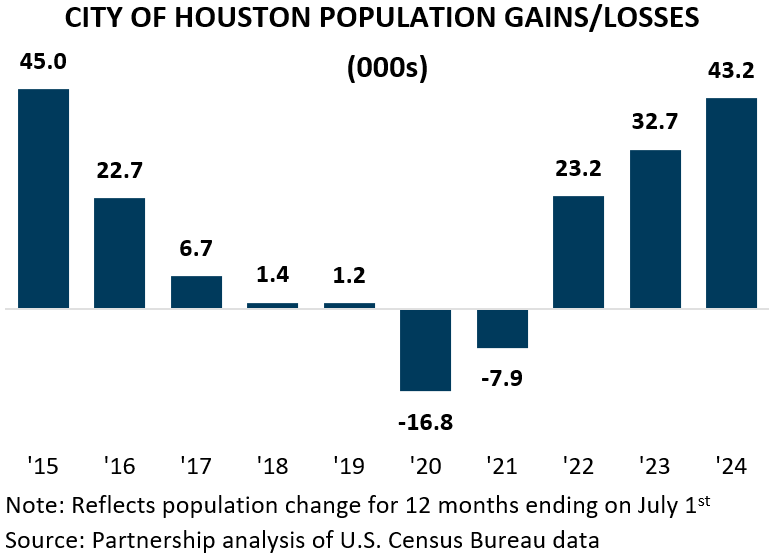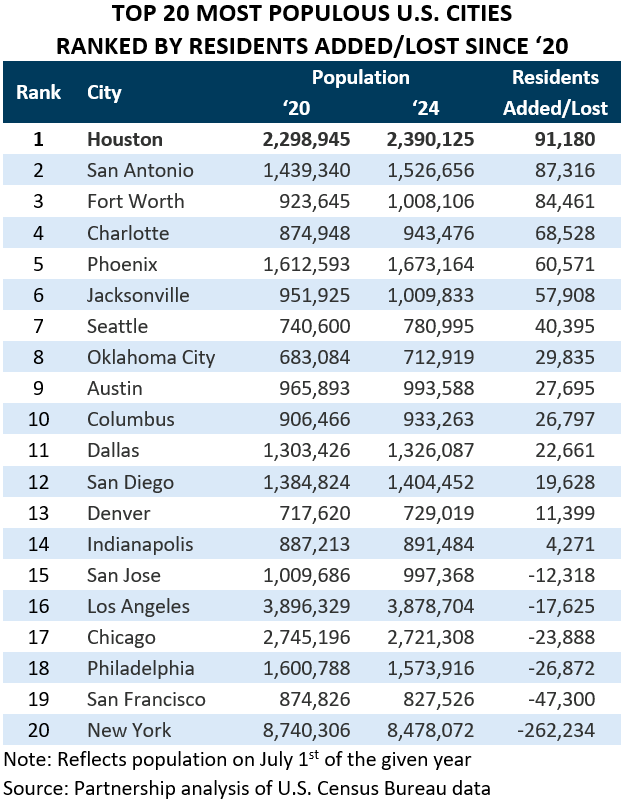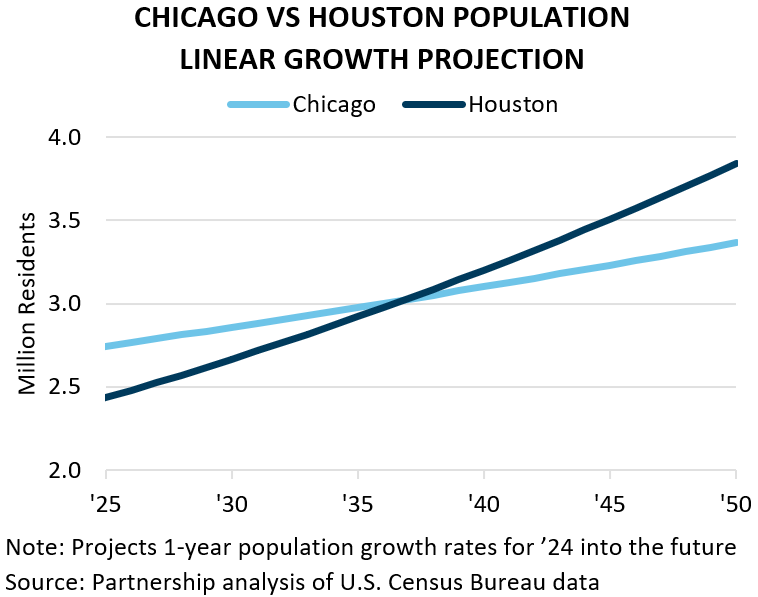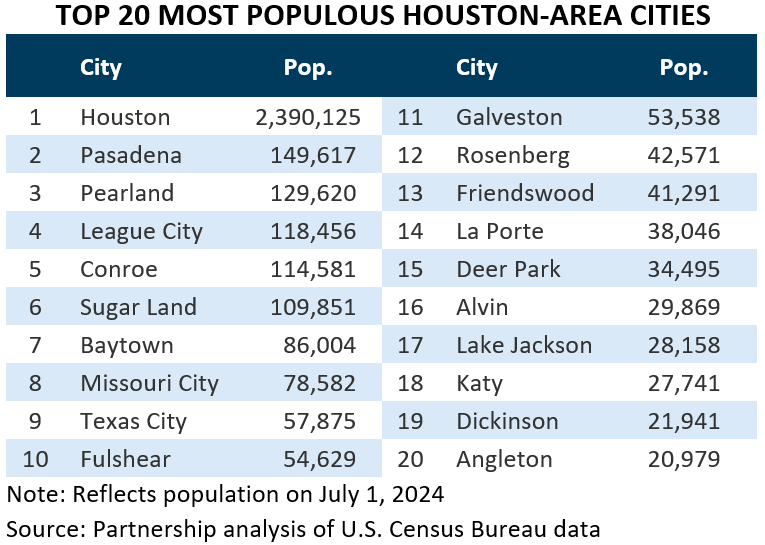Economy at a Glance - June 2025
CITY POPULATION GROWTH
The City of Houston is growing at a strong pace, with 43,217 new residents added last year bringing the city’s population to a record 2,390,125 people. Since ’22, Houston has experienced robust growth, reversing a five-year stint of weak or negative growth in the aftermath of Hurricane Harvey and the COVID-19 pandemic.
Some professionals left the city for the suburbs during the pandemic, opting to live further from the office in larger more affordable homes. However, as offices have scaled back their work-from-home policies, demand to live closer to the city center has partially rebounded.
Houston has led the nation in municipal population growth during the ’20s. In the four years since the start of the decade, the City of Houston has added 91,180 new residents – more than any other major city. All three cities with larger baseline populations (New York, Los Angeles, and Chicago) shed residents during that time. New York City alone lost over a quarter-million people during those four years, with residents moving out in search of more space and a lower cost of living.
Among major cities adding the most residents, a disproportionate number are in Texas. The top three cities are all in the Lone Star State, with San Antonio and Fort Worth trailing behind Houston in the second and third spots. Austin and Dallas have also shown meaningful growth.
Houston continues to be the fourth most populous U.S. city, trailing Chicago. After several years of population decline, Chicago saw growth in ’24. Still, Houston’s growth rate is much faster. Based on last year’s growth rates, Houston is projected to overtake Chicago as the third-largest U.S. city in ‘37.
But this projection is naïve and overly simple. There is no reason to think the current growth rates will stay constant in the future. Unforeseen events and trends can emerge, pushing the date when Houston might overtake Chicago sooner or later.
The Census Bureau’s new population data also shows how different communities are growing within the metro area. The region’s 20 largest cities are as follows. (Note: this excludes communities like the Woodlands or Spring which are not incorporated as independent cities.)
Houston proper is home to 2.4 million people, or approximately 31 percent of all metro residents. Pasadena, Pearland, League City, Conroe, and Sugar Land are each home to more than 100,000 people. Fulshear has grown significantly and overtaken Galveston as the 10th-largest city in the region.
To continue reading, download this report.
Note: The geographic area referred to in this publication as “Houston,” "Houston Area” and “Metro Houston” is the ten-county Census designated metropolitan statistical area of Houston-Pasadena-The Woodlands-Sugar Land, TX. The ten counties are: Austin, Brazoria, Chambers, Fort Bend, Galveston, Harris, Liberty, Montgomery, San Jacinto, and Waller.





















